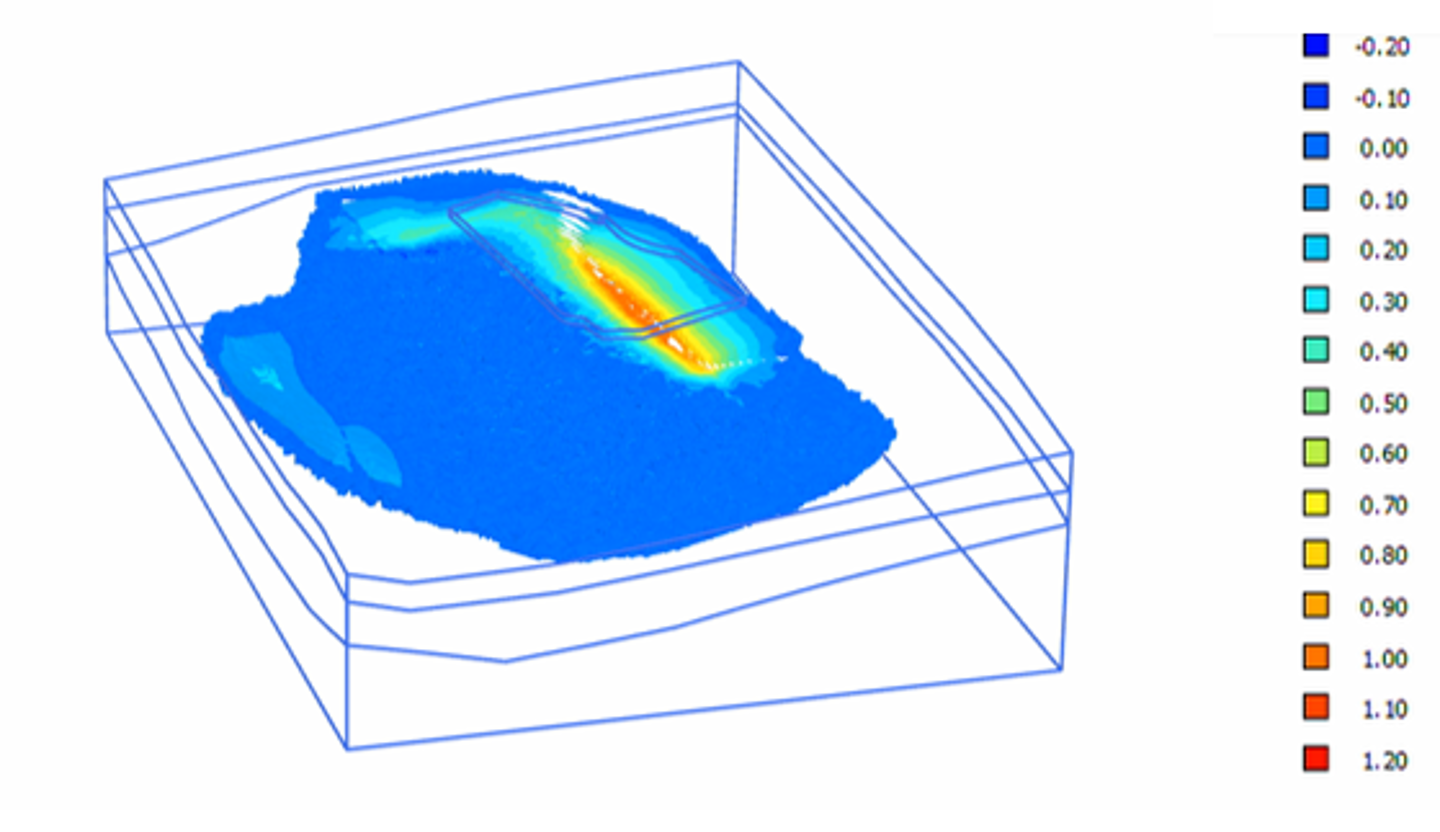Modelling of 3D effects in Gjerdrum slope failure
The main objective of this master thesis is to investigate the strain-softening effect in a 3D domain on the computed safety factor by comparing the results of 2D and 3D calculations for the Gjerdrum slope failure.

In recent years, there have been increasing developments in the use of 3D tools in our geotechnical practice (e.g., interests in BIM, geotechnical data presentation & visualisations in 3D). As a result, there is also a growing interest in looking at the possibility of performing stability analysis in 3D for use in projects.
It is a common practice to perform a 2D LEM (limit equilibrium method) or 2D FEM back-analyses to access the safety factor (SF) of failed slopes. However, such analyses in many scenarios have led to spurious SF values. The ill-estimation of the safety factor using a 2D framework of analyses, amongst other factors, could be due to the method's incapability to account for 3D effects and strain-softening in sensitive materials.
The assignment
This assignment suggests investigating the strain-softening effect in a 3D domain on the computed SF by comparing the results of 2D and 3D calculations. The outcomes of the approach will be validated against 2D/3D analyses of the 2020 Gjerdrum slope failure. The outcomes of the work would encompass scenarios under which 3D effects would be dominant and lead to unreliable SF predictions with 2D modelling.

Contour depicting the development of softening in the quick clay layer for the Skjeggestad bridge slope. The colour scale illustrates the degree of softening (where 0 is no softening, and 1 is complete softening).
